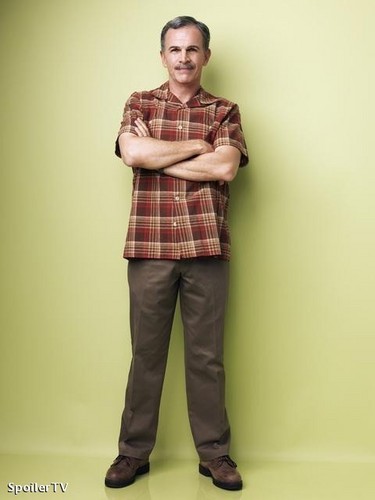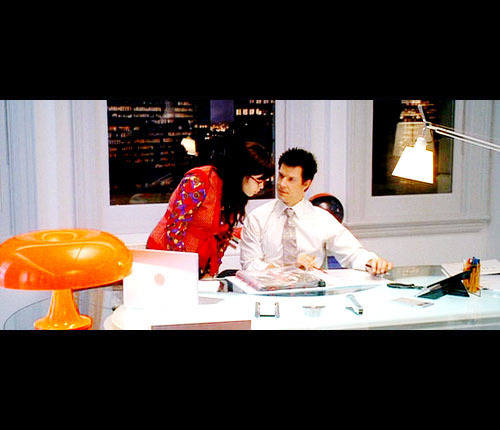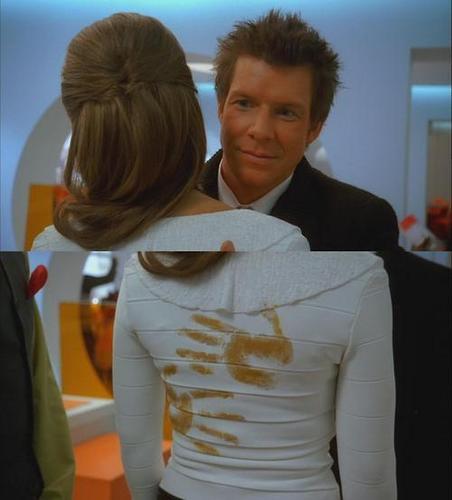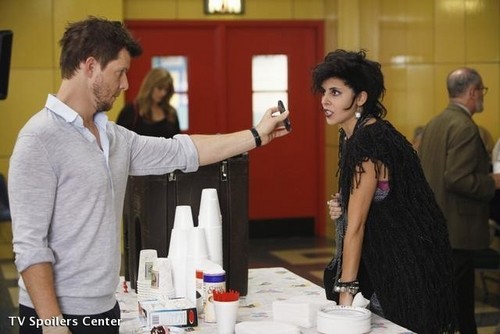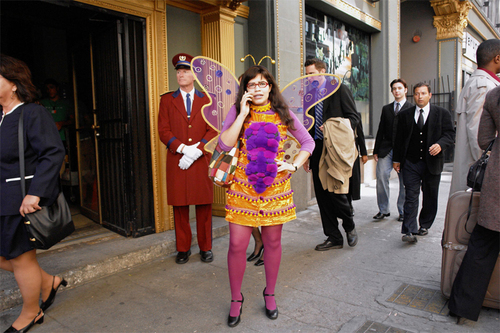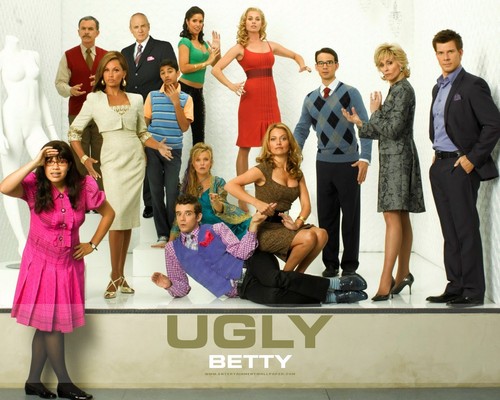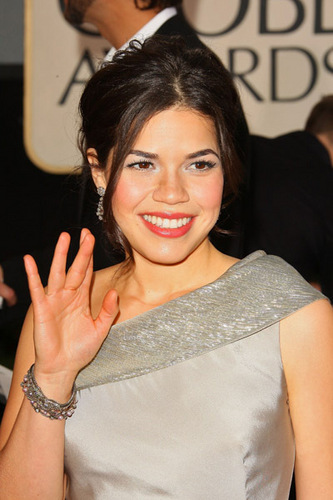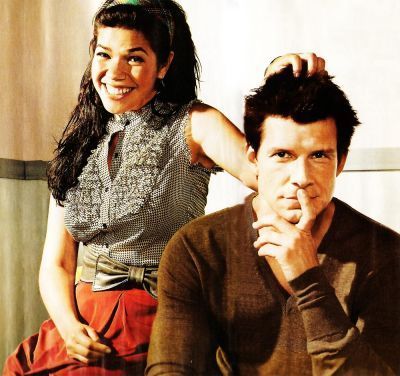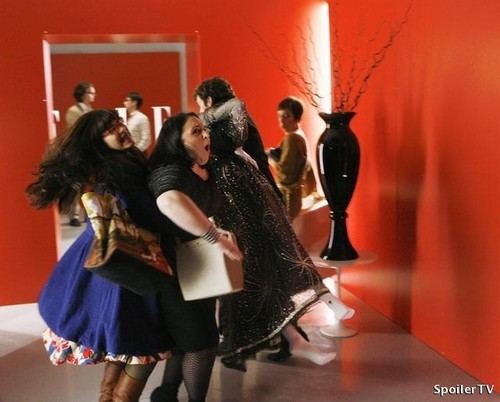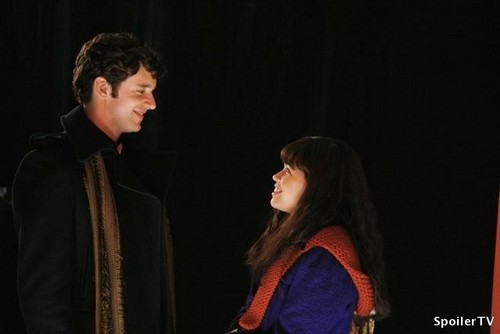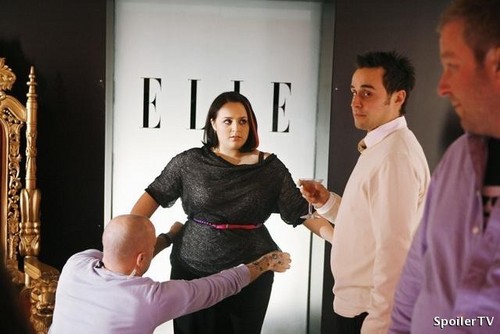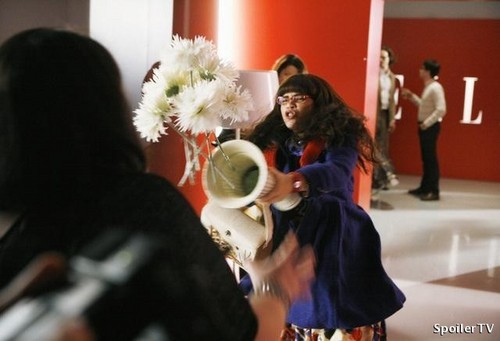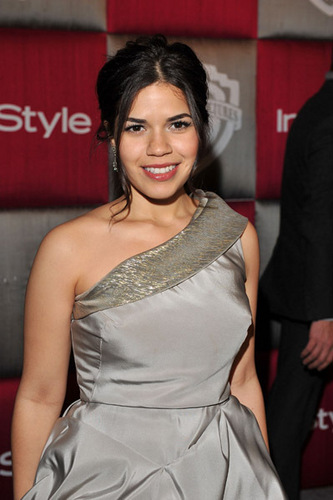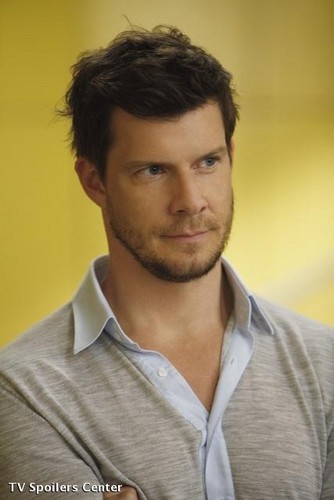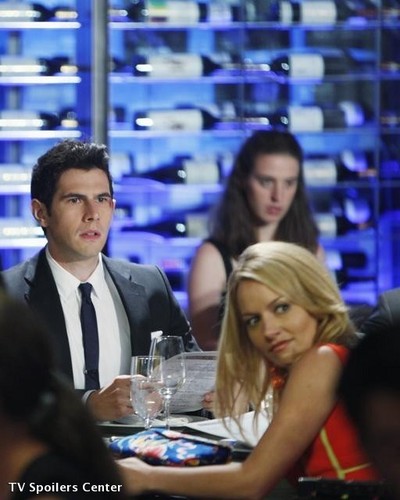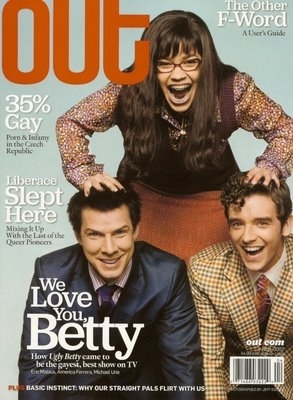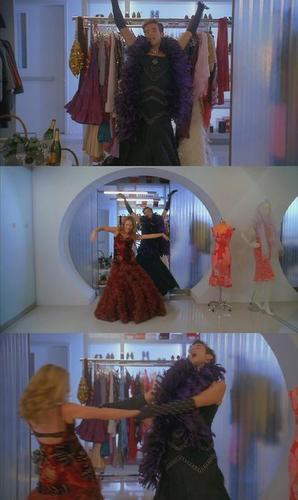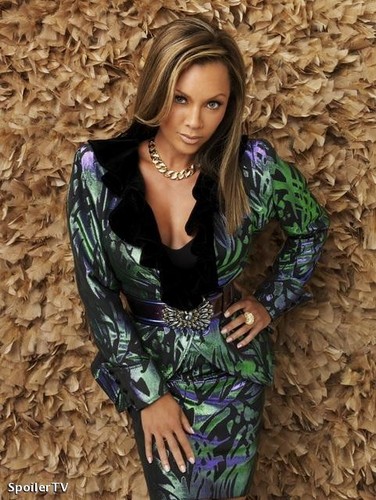The term 'representation' is one of the many key areas in Media and Cultural studies in relation to the concept of identity and how it is formed.
Representation refers to the way people, places etc are portrayed, especially in context of the media and how they are viewed by the audience, which is us. Because they are representations, this means therefore that characters and people on TV and film are branded, shaped, dressed and shown as they are on screen by the producers. In studying these representations, we are decoding them and then drawing on a range of meanings- be it fictional or real; implicit or explicit. By viewing media representations of certain characters and people, we then decide afterwards whether these representations either challenge notions of identity and how certain social and minority groups in society behave, talk and act in real life... or whether they seek to highlight and reflect those cultures, lifestyles and trends.
Or perhaps present a much maligned and distorted idea of these characters and their situations.
We have to take into consideration when analysing and critiquing the media that every TV show, film, music video is a representation of how that person- the producer or creator of the show for example- sees that particular 'world'. Therefore, that world may not be entirely true in real life and yet in the media, producers intend on showing us one 'view' of it through the use of images and actors playing the characters on the show or film.
Within representation, Stereotypes is an area that is widely covered in TV and film. According to Branston and Stafford:
'Stereotypes are not actual people but widely circulated ideas or assumptions about particular groups' (Branston and Stafford).
In other words, they are 'exaggerated' versions of what people tend to believe is how those sets of individuals behave, dress, talk in real life. Because of how that actor or actress portrays that character, particular if it is one who is from a minority group; i.e women, gay/lesbian, black, asian, disabled, audiences can see for themselves how they are represented and portrayed. And for people hailing from those minority groups to discuss whether those representations are deemed fair, accurate and in a positive light to themselves.
The use of stereotypes in TV shows, particuarly in Ugly Betty is evident. The male characters are outnumbered by the female ones and yet they are all either stereotypes or display stereotypical traits in their personality. Daniel is the sex addict; Marc is the flamboyant, effeminate gay male; teenager Justin has shown signs of coming out of the closet later on in the series and Ignascio- father of Betty, Hilda and Justin- in the first season is an illegal immigrant from Mexico settling in Queens, New York. As for the women, Amanda is the bitchy blonde receptionist, who later finds out she was adopted as a child; Christina is the Scottish seamstress, Claire is a former alcoholic and Hilda is a single mother/ ex-high school drop- out.
Gender is another area within representation; as a cultural term, it refers to a person being either a man or a woman. Texts construct images and ideas of gender and identity and that these texts can be seen as being either masculine or feminine (149, 150, Dictionary of Media Studies). An example of a feminine text would be 'Sex in the City as it draws on contemporary themes of femininity and what it means to be a woman living in a city such as New York.
In his book, Professor of Media and Cultural Studies, Jonathan Bignell used Ugly Betty as a prime example to discuss how the show conveys certain ideological and cultural values and ideas, in relation to gender. He argues that as a show, the reason why Ugly Betty has been such a worldwide success, is mainly because through the storylines and characters it has responded to the current cultural concerns held regarding women and their role in the workplace (70, An Introduction to TV Studies) .
Here, he points out that women's roles in society have always been viewed in terms of the husband/guy goes out to work to earn money and provide and put food on the table, whilst the wife/woman cooks, cleans and looks after the children at home. And yet shows such as 'Ugly Betty' have exemplified that women can be successful in the world of work. And that the likes of Betty Suarez can become a valuable asset, not just to the company but also to her co-workers, via the friendships she makes and forges along the way at Mode.
The very notion that to be successful and to do well, one has to be physically attractive and appealing in the work place can be contradicted because Betty is an example of someone, who in spite of her appearances she gets down to work and concerntrates on her job, irrespective of what other people may think of her. The other female characters on Ugly Betty- Hilda, Wilhelmina, Claire, Christina, Amanda, Alexis- in contrast are more attractive and appealing than Betty. But what makes her a role model to thousands of young fans is the fact that she is young, intelligent and living proof that you do not have to be good-looking to succeed in your career and to have a good life; as a Latina, it is her upbringing and the environment from which she was originally raised that keeps Betty grounded at Mode and this prevents her from turning into a different type of person.
Despite their differences in identity both Marc and Betty have numerous similarities to each other; likewise, age-wise they are in their early-mid 20s and hail from different minority groups. Marc is gay, whilst Betty is from the Latin American community; both are assistants who are developing their careers at Mode and YETI respectively. Marc is the assistant to the co editor-in-chief, Wilhelmina Slater, the other is Betty to the editor-in chief, Daniel Meade.
Ugly Betty combines elements of comedy, drama and social commentary altogether, which is then incorporated and tied in with the storylines. The show engages the audience through the continuous plotline, whilst emphasising themes relating to gender and identity, as well as work, friendship and honesty. In terms of representation, it is fair to say that the show has been successful in highlighting and embracing these differences. Gay culture, fashion, gender, hispanic culture, family, work, friendship- these are all themes represented on Ugly Betty and shown on mainstream television.
Ugly Betty has been pivitol in television and has won a span of awards. As for the secret to its success, I am not entirely sure as of yet. But whatever it is, make no mistake about it: Ugly Betty HAS succeeded in highlighting, addressing and acknowledging gender and representation in a way that is both appealing and informative at the same time.
sources:
-www.mediaknowall/representation- Representation AS/A2 level
-www.-Media Studies: Aim Higher
-The Media Students Book
-Dictionary of Media Studies
-An Introduction to Television Studies
Representation refers to the way people, places etc are portrayed, especially in context of the media and how they are viewed by the audience, which is us. Because they are representations, this means therefore that characters and people on TV and film are branded, shaped, dressed and shown as they are on screen by the producers. In studying these representations, we are decoding them and then drawing on a range of meanings- be it fictional or real; implicit or explicit. By viewing media representations of certain characters and people, we then decide afterwards whether these representations either challenge notions of identity and how certain social and minority groups in society behave, talk and act in real life... or whether they seek to highlight and reflect those cultures, lifestyles and trends.
Or perhaps present a much maligned and distorted idea of these characters and their situations.
We have to take into consideration when analysing and critiquing the media that every TV show, film, music video is a representation of how that person- the producer or creator of the show for example- sees that particular 'world'. Therefore, that world may not be entirely true in real life and yet in the media, producers intend on showing us one 'view' of it through the use of images and actors playing the characters on the show or film.
Within representation, Stereotypes is an area that is widely covered in TV and film. According to Branston and Stafford:
'Stereotypes are not actual people but widely circulated ideas or assumptions about particular groups' (Branston and Stafford).
In other words, they are 'exaggerated' versions of what people tend to believe is how those sets of individuals behave, dress, talk in real life. Because of how that actor or actress portrays that character, particular if it is one who is from a minority group; i.e women, gay/lesbian, black, asian, disabled, audiences can see for themselves how they are represented and portrayed. And for people hailing from those minority groups to discuss whether those representations are deemed fair, accurate and in a positive light to themselves.
The use of stereotypes in TV shows, particuarly in Ugly Betty is evident. The male characters are outnumbered by the female ones and yet they are all either stereotypes or display stereotypical traits in their personality. Daniel is the sex addict; Marc is the flamboyant, effeminate gay male; teenager Justin has shown signs of coming out of the closet later on in the series and Ignascio- father of Betty, Hilda and Justin- in the first season is an illegal immigrant from Mexico settling in Queens, New York. As for the women, Amanda is the bitchy blonde receptionist, who later finds out she was adopted as a child; Christina is the Scottish seamstress, Claire is a former alcoholic and Hilda is a single mother/ ex-high school drop- out.
Gender is another area within representation; as a cultural term, it refers to a person being either a man or a woman. Texts construct images and ideas of gender and identity and that these texts can be seen as being either masculine or feminine (149, 150, Dictionary of Media Studies). An example of a feminine text would be 'Sex in the City as it draws on contemporary themes of femininity and what it means to be a woman living in a city such as New York.
In his book, Professor of Media and Cultural Studies, Jonathan Bignell used Ugly Betty as a prime example to discuss how the show conveys certain ideological and cultural values and ideas, in relation to gender. He argues that as a show, the reason why Ugly Betty has been such a worldwide success, is mainly because through the storylines and characters it has responded to the current cultural concerns held regarding women and their role in the workplace (70, An Introduction to TV Studies) .
Here, he points out that women's roles in society have always been viewed in terms of the husband/guy goes out to work to earn money and provide and put food on the table, whilst the wife/woman cooks, cleans and looks after the children at home. And yet shows such as 'Ugly Betty' have exemplified that women can be successful in the world of work. And that the likes of Betty Suarez can become a valuable asset, not just to the company but also to her co-workers, via the friendships she makes and forges along the way at Mode.
The very notion that to be successful and to do well, one has to be physically attractive and appealing in the work place can be contradicted because Betty is an example of someone, who in spite of her appearances she gets down to work and concerntrates on her job, irrespective of what other people may think of her. The other female characters on Ugly Betty- Hilda, Wilhelmina, Claire, Christina, Amanda, Alexis- in contrast are more attractive and appealing than Betty. But what makes her a role model to thousands of young fans is the fact that she is young, intelligent and living proof that you do not have to be good-looking to succeed in your career and to have a good life; as a Latina, it is her upbringing and the environment from which she was originally raised that keeps Betty grounded at Mode and this prevents her from turning into a different type of person.
Despite their differences in identity both Marc and Betty have numerous similarities to each other; likewise, age-wise they are in their early-mid 20s and hail from different minority groups. Marc is gay, whilst Betty is from the Latin American community; both are assistants who are developing their careers at Mode and YETI respectively. Marc is the assistant to the co editor-in-chief, Wilhelmina Slater, the other is Betty to the editor-in chief, Daniel Meade.
Ugly Betty combines elements of comedy, drama and social commentary altogether, which is then incorporated and tied in with the storylines. The show engages the audience through the continuous plotline, whilst emphasising themes relating to gender and identity, as well as work, friendship and honesty. In terms of representation, it is fair to say that the show has been successful in highlighting and embracing these differences. Gay culture, fashion, gender, hispanic culture, family, work, friendship- these are all themes represented on Ugly Betty and shown on mainstream television.
Ugly Betty has been pivitol in television and has won a span of awards. As for the secret to its success, I am not entirely sure as of yet. But whatever it is, make no mistake about it: Ugly Betty HAS succeeded in highlighting, addressing and acknowledging gender and representation in a way that is both appealing and informative at the same time.
sources:
-www.mediaknowall/representation- Representation AS/A2 level
-www.-Media Studies: Aim Higher
-The Media Students Book
-Dictionary of Media Studies
-An Introduction to Television Studies


